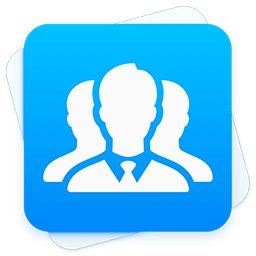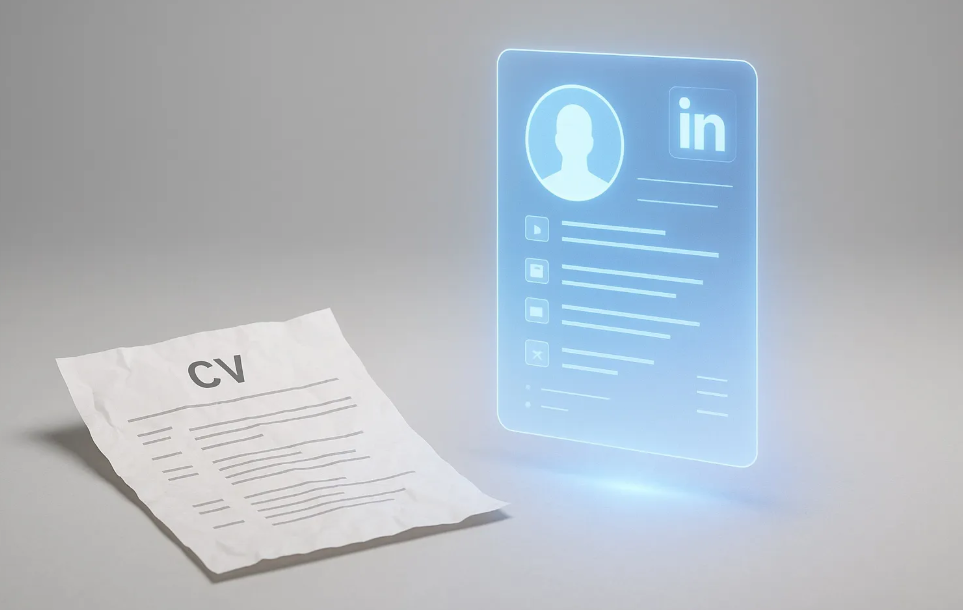In the modern job market, the resume is no longer a static document confined to a single page—it has become the cornerstone of a personal brand that extends across digital platforms. LinkedIn profiles, personal websites, online portfolios, and even social media accounts now form part of a unified professional identity. Recruiters and employers no longer rely solely on resumes; they Google names, scan LinkedIn, and browse portfolios before making decisions.
This transformation requires a shift in how individuals think about professional self-presentation. A resume is no longer an isolated tool for job hunting but a living foundation upon which one builds a cohesive and authentic digital presence. This essay explores the evolution of the resume in the digital age, practical strategies for integrating it with other platforms, design and tone consistency, and the future of personal branding in an interconnected, data-driven professional world.
The Evolution of the Resume in the Digital Era
The resume has existed for centuries, but its function has evolved dramatically with the rise of digital technologies. In the mid-20th century, resumes were formal, printed summaries of experience. In the 1990s, as personal computing spread, resumes became word-processed and easily shareable via email. But with the emergence of social media and professional networking platforms like LinkedIn, the resume expanded beyond paper and entered the digital ecosystem.
The Resume as Narrative
In today’s competitive labor market, resumes no longer serve as mere lists of achievements—they function as personal narratives. Recruiters and employers seek candidates who not only possess qualifications but also communicate values, creativity, and self-awareness. The resume thus acts as the opening chapter of a larger professional story that unfolds across multiple digital spaces.
For example, a resume might highlight analytical skills, while a personal website provides examples of data visualization projects and a LinkedIn profile features recommendations that reinforce credibility. Together, these components form a multidimensional portrayal that a single document could never achieve alone.
From Static to Dynamic Identity
This shift from static document to dynamic digital presence mirrors broader cultural and economic transformations. In an era of remote work, gig economies, and global networks, professionals are increasingly expected to manage their own personal “brands.” A cohesive online identity can open opportunities, attract collaborators, and build long-term professional reputation.
In this new context, the resume acts as a foundation: concise, factual, and strategically designed to align with one’s broader online ecosystem.
Building a Consistent Personal Brand Across Platforms
A personal brand integrates multiple channels of professional expression. The goal is not to copy-paste a resume everywhere, but to translate its key elements into various forms appropriate for each medium. Consistency across platforms signals professionalism, while thoughtful adaptation reveals authenticity and digital fluency.
Core Elements of a Unified Brand
-
Tone and Voice: Whether formal, creative, or technical, your tone should remain consistent. The wording on your resume, bio, and online posts should align.
-
Visual Identity: Use the same profile photo, color palette, and font style across LinkedIn, portfolio sites, and personal blogs. Visual coherence enhances recognizability.
-
Key Message: Identify three to five professional themes (e.g., innovation, leadership, sustainability) that define your expertise. These should appear throughout all platforms.
-
Keywords and SEO: Recruiters use search algorithms. Repeating strategic keywords across your resume and LinkedIn improves discoverability.
Digital Storytelling
A modern professional must learn to craft a digital story that extends beyond chronological experience. For instance, if a resume lists “project management,” your LinkedIn posts might showcase lessons learned from leading teams, while your portfolio includes a case study with visuals and outcomes. This not only reinforces skills but also humanizes them—turning credentials into narrative evidence.
Table: Translating Resume Elements into Online Platforms
| Resume Element | LinkedIn Adaptation | Portfolio/Website Adaptation | Social Media (e.g., X, Instagram) |
|---|---|---|---|
| Professional Summary | Transform into a concise “About” section emphasizing value and motivation | Expand into a detailed personal statement or mission | Share highlights, quotes, or professional philosophy |
| Experience | Mirror key achievements but with more context and links | Include full project case studies, visuals, or testimonials | Share updates about ongoing work or reflections |
| Skills | Add endorsements, badges, and measurable data | Demonstrate skills through project samples or blog posts | Offer quick insights, tips, or thought pieces |
| Education | Include degrees and certifications | Provide related coursework or research | Share personal insights on learning experiences |
| Awards/Recognition | Display honors and media mentions | Archive press coverage and certificates | Post gratitude or reflective commentary |
This table illustrates how a traditional resume can serve as a blueprint for an integrated online identity. Each platform amplifies a different dimension of professionalism, helping potential employers and collaborators form a holistic impression.
Integrating Platforms: Strategy and Practice
Transforming a resume into a living brand requires a deliberate strategy. Simply linking profiles is not enough—each platform must serve a purpose within a coherent ecosystem.
LinkedIn: The Central Hub
LinkedIn remains the backbone of digital professional identity. It merges the credibility of a resume with the interactivity of a social network. When optimizing your profile, consider:
-
Crafting a compelling headline that echoes your resume’s main professional identity.
-
Using a banner image that reflects your industry or values.
-
Expanding each experience entry to tell a story about impact and collaboration.
-
Engaging with others’ posts to demonstrate thought leadership.
Consistency between your resume and LinkedIn creates trust. Recruiters often compare both, so alignment is essential.
Personal Websites and Portfolios
A personal website or portfolio is your creative space—an opportunity to show what can’t fit into a resume. This includes visual projects, writing samples, presentations, or research data. A well-designed site strengthens your digital credibility.
Modern tools such as Squarespace, Notion, and WordPress make it easy to build a portfolio that reflects your personal aesthetics and professional expertise. Including testimonials, case studies, or downloadable resumes can create a seamless user experience for potential employers.
Social Media as Extension, Not Distraction
Social platforms—Twitter/X, Instagram, or even TikTok—can amplify your professional voice if used strategically. The key is to maintain boundaries between personal and professional content. Thoughtful posts about industry trends, insights, and projects can demonstrate engagement and authenticity.
However, professionals must also recognize potential risks: oversharing or controversial content can undermine credibility. The balance between personal expression and professional integrity defines a mature digital identity.
Authenticity and Ethical Considerations in Personal Branding
As personal branding becomes more pervasive, authenticity and ethics become crucial. An over-engineered brand may appear artificial, while underdeveloped online identities risk invisibility.
Authenticity and Narrative Consistency
The essence of authenticity lies in coherence: your resume claims should be verifiable through your portfolio, your tone should match your stated values, and your professional story should feel natural rather than scripted. Recruiters are increasingly skilled at detecting inconsistencies between documents and online behavior.
For instance, claiming “strong communication skills” on a resume but having no evidence of written work or online engagement can appear contradictory. Similarly, exaggerating achievements or using overly promotional language can erode trust. Authentic branding, therefore, requires transparency and alignment between your actual experience and digital persona.
Ethics and Digital Reputation
Digital branding introduces ethical challenges. The line between professional promotion and manipulation can blur easily. Professionals should respect confidentiality, avoid plagiarism in portfolios, and credit collaborators properly. Ethical self-representation ensures long-term credibility and prevents reputational harm.
Moreover, maintaining digital hygiene—checking old posts, managing privacy settings, and ensuring all content aligns with your current values—has become an essential skill in the digital job market.
Future Trends: AI, Data, and the Next Stage of Professional Identity
The future of resumes and personal branding will increasingly involve automation, personalization, and AI-driven platforms. Already, AI tools assist in writing, formatting, and optimizing resumes for applicant tracking systems (ATS). But the next phase will go further—creating dynamic personal ecosystems that evolve in real time.
AI and Personalization
Artificial intelligence will personalize professional presentation based on audience. A single digital profile could generate a tailored version of your resume for different recruiters, highlighting the most relevant experiences automatically. AI-driven analytics could also measure how visitors engage with your portfolio and suggest updates to enhance performance.
Blockchain Credentials and Verification
Blockchain technology promises secure, verifiable digital credentials. In the near future, resumes may include verified certificates, work histories, and recommendations stored on blockchain networks. This would make personal brands more transparent and resistant to falsification, increasing trust between employers and candidates.
The Human Element
Despite these technological advancements, the human element will remain central. Personal branding must still communicate empathy, curiosity, and creativity—qualities that machines cannot replicate. The resume, whether digital or physical, will continue to serve as a narrative anchor connecting human stories to professional aspirations.
Conclusion
The evolution from a single-page resume to an integrated personal brand marks one of the most significant changes in professional communication. Today’s successful professionals understand that the resume is only the starting point—a foundation upon which to build a consistent, authentic, and dynamic online identity.
By aligning resume content with LinkedIn profiles, personal websites, and social media, individuals can transform fragmented digital traces into a cohesive professional narrative. The goal is not to become a brand in the commercial sense but to express one’s professional story clearly and confidently across platforms.
As technology continues to reshape the labor market, those who master the art of integrating resumes into broader personal ecosystems will not only stand out but also build lasting reputations. The resume is no longer an endpoint—it is the beginning of a living story that evolves with every click, connection, and creative achievement.

